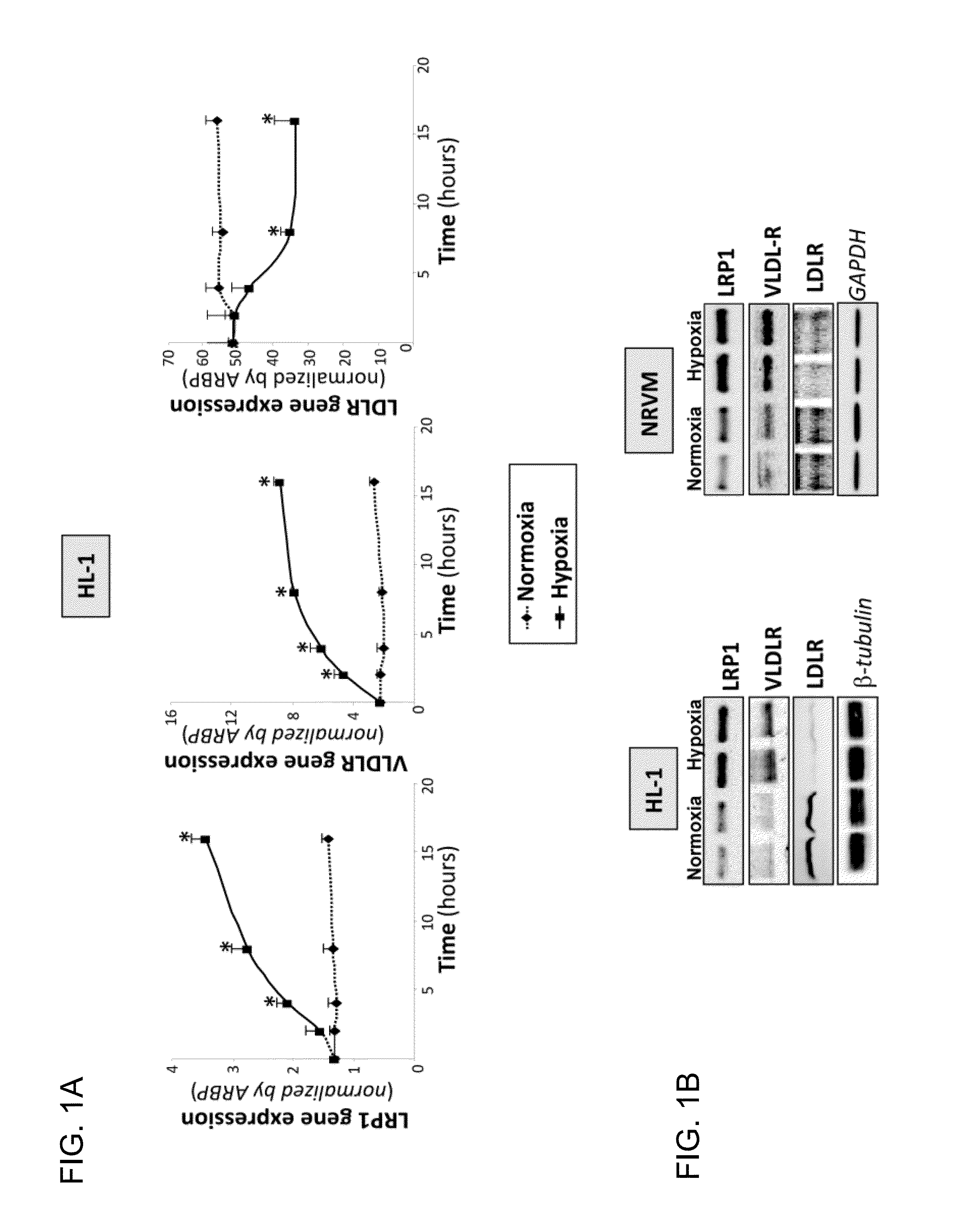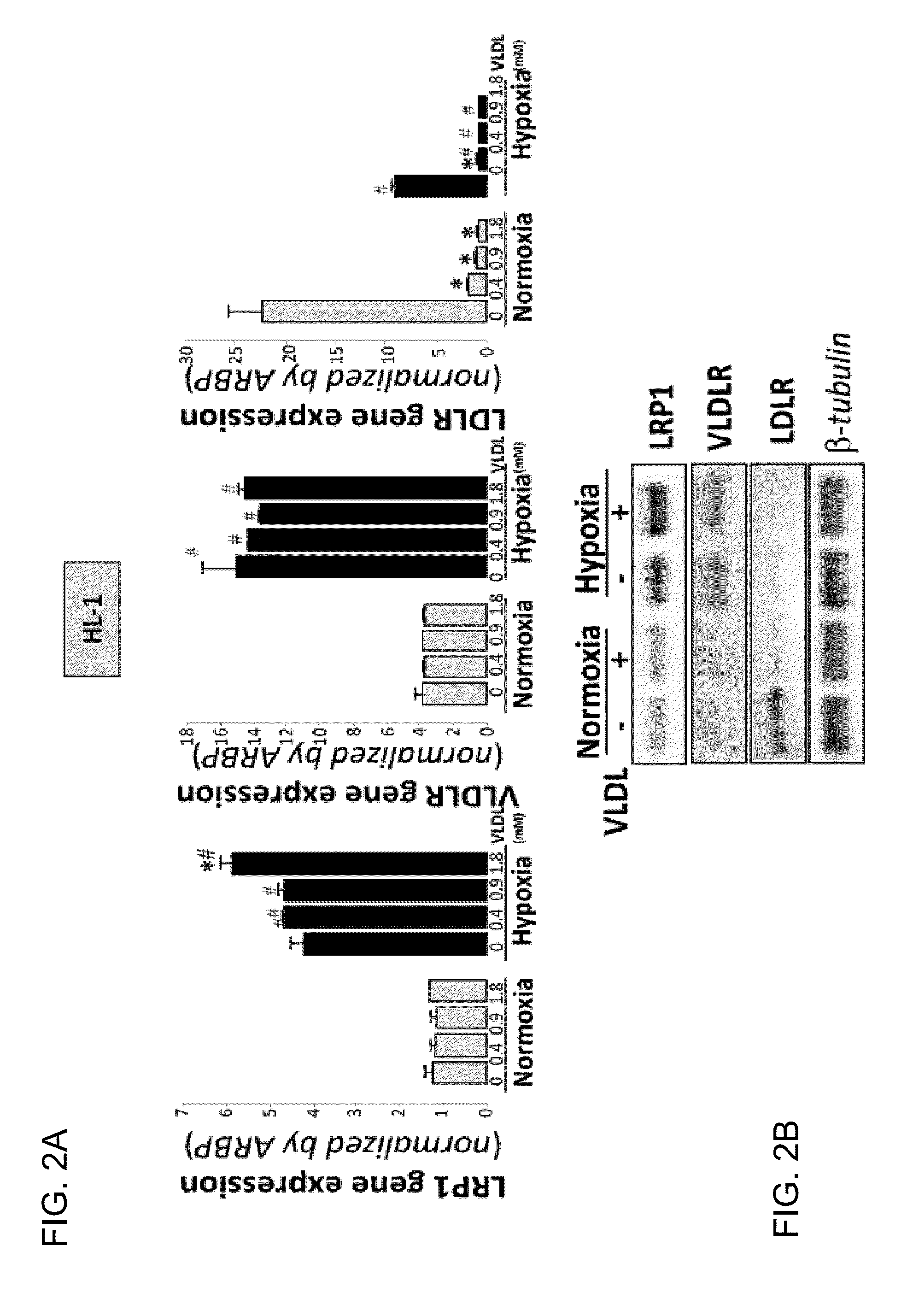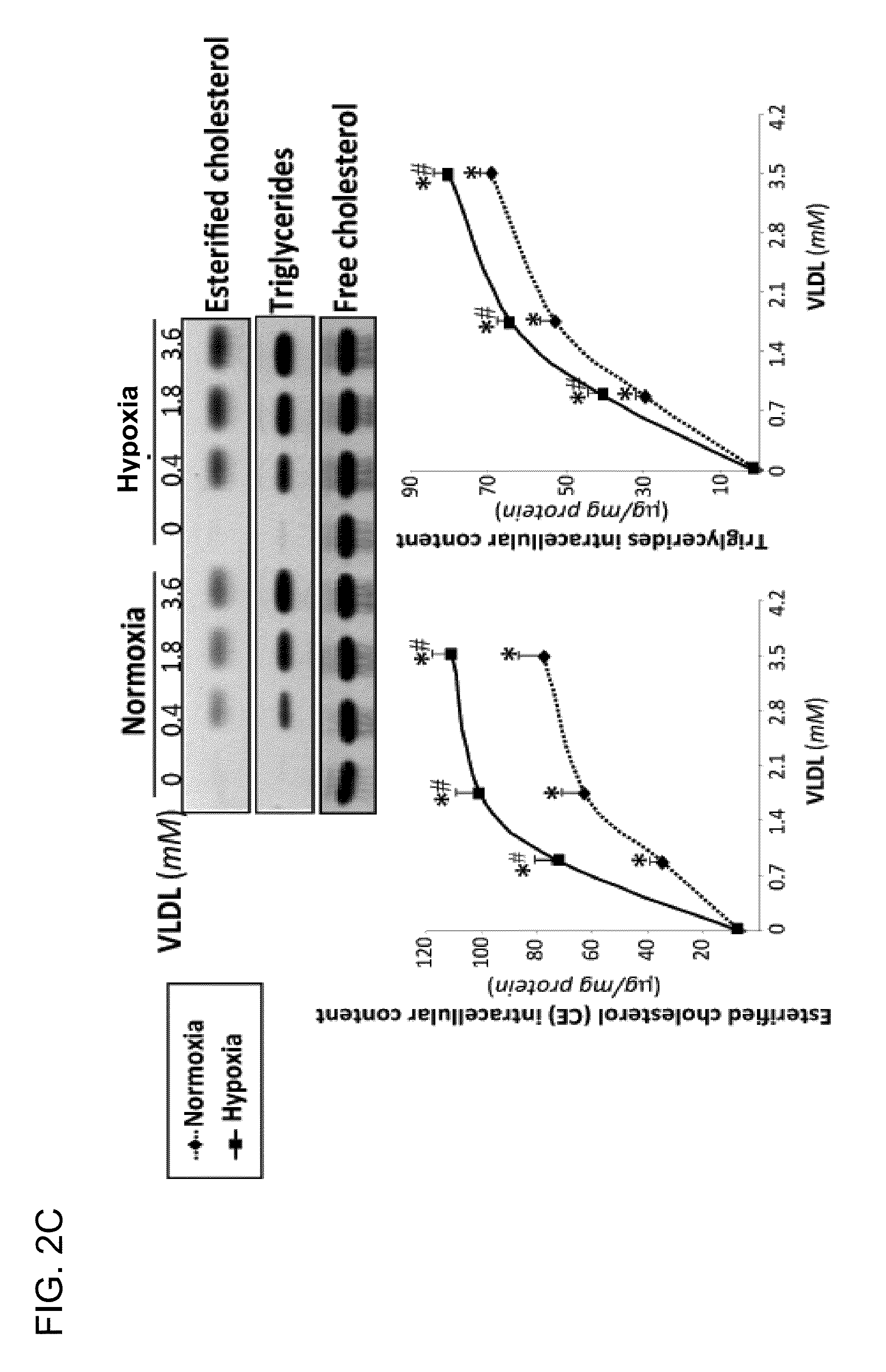LRP1 as key receptor for the transfer of sterified cholesterol from very-low-density lipoproteins (VLDL) to ischaemic cardiac muscle
a very-low-density lipoprotein and key receptor technology, applied in the direction of antibody medical ingredients, peptide/protein ingredients, peptide sources, etc., can solve the problem of progressive imbalance between oxygen supply and demand in the myocardium
- Summary
- Abstract
- Description
- Claims
- Application Information
AI Technical Summary
Benefits of technology
Problems solved by technology
Method used
Image
Examples
example 1
Effect of Hypoxia on the Expression of Lipoprotein Receptors by the Cardiomyocyte
[0095]Adult HI-1 cardiomyocytes or neonatal rat cardiomyocytes (NRVM) were exposed to normoxia or hypoxia conditions. The expression of LRP1, VLDL receptor (VLDLR) and classic LDL receptor (LDLR) was analyzed at mRNA level by means of real-time PCR and at protein level by means of a Western blot analysis. (FIG. 1)
[0096]It was observed that in cardiomyocytes subjected to normoxia, the expression levels of LRP1 and VLDLR were very low, whereas levels of LDLR were very high, especially in adult HL-1 cardiomyocytes. This expression pattern was completely altered by exposing the cardiomyocytes to hypoxia. As observed in FIG. 1A, hypoxia induced in a time-dependant way the expression of LRP1 (from 1.6-fold after 4 hours to 2.7-fold after 16 hours) and also the expression of VLDLR (from 2.8-fold after 4 hours to 4-fold after 16 hours), while classic LDL receptor expression decreased (from 10% after 4 hours to ...
example 2
Effect of VLDL on the Expression of Lipoprotein Receptors (LRP1, VLDLR and LDLR) and on the Accumulation of Neutral Lipids (CE, TG and FC) 1N HL-1 Exposed to Normoxia or Hypoxia
[0098]Cells exposed to VLDL in normoxia or hypoxia were collected and the study of the expression of lipoprotein receptors and the determination of intracellular lipids was performed. The results in FIG. 2A demonstrated that VLDL in every dose tested inhibited the expression or mRNA of LDLR in normoxic or hypoxic cells, and that the highest dose of VLDL increased the expression of LRP1 in hypoxic HL-1. Expression of VLDLR was not significantly altered by the presence of VLDL. The Western blot analysis (FIG. 2B) confirmed at protein level the results obtained at mRNA level. The thin-layer chromatography assays (FIG. 2C) demonstrated that VLDL induced intracellular lipid accumulation in a VLDL-dose dependant way from 6.7±2.2 to 77.6±8.8 μg CE / mg of cellular protein and from 2.5±0.2 to 69.17±3.0 μg TG / mg of cell...
example 3
Design of a Lentivirus to Inhibit Expression of the Receptor LRP1
[0101]A) Different miR RNAi sequences were designed using the Invitrogen BLOCK-IT™ RNAi Designer to inhibit expression of LRP1 (XM—001056970) by incorporating it into lentiviruses used to infect HL-1 and NRVM: the sequences SEQ ID No: 1, and SEQ ID No: 2 were designed to inhibit the expression of LRP1 (miR RNAi-XM—001056970—1919 or RNAi1919 (SEQ ID No: 16)); the sequences SEQ ID No 3: and SEQ ID No: 4 were designed to inhibit the expression of LRP1 (miR RNAi-XM—001056970—8223 or RNAi8223 (SEQ ID No: 17)); and the sequences SEQ ID No: 5 and SEQ ID No: 6 were designed to inhibit the expression of LRP1 (miR RNAi-XM—001056970—8531 or RNAi8531 (SEQ ID No: 18)).
[0102]The plasmid pcDNA™ 6.2-GW / miR was used as a negative control in all the transfection experiments: SEQ ID No: 7 and SEQ ID No: 8 sequences were designed for universal negative control (pcDNA™ 6.2-GW / miR-neg).
[0103]B) Analysis of expression of mRNA of LRP1 in HL-1...
PUM
| Property | Measurement | Unit |
|---|---|---|
| temperature | aaaaa | aaaaa |
| concentration | aaaaa | aaaaa |
| pH | aaaaa | aaaaa |
Abstract
Description
Claims
Application Information
 Login to View More
Login to View More - R&D
- Intellectual Property
- Life Sciences
- Materials
- Tech Scout
- Unparalleled Data Quality
- Higher Quality Content
- 60% Fewer Hallucinations
Browse by: Latest US Patents, China's latest patents, Technical Efficacy Thesaurus, Application Domain, Technology Topic, Popular Technical Reports.
© 2025 PatSnap. All rights reserved.Legal|Privacy policy|Modern Slavery Act Transparency Statement|Sitemap|About US| Contact US: help@patsnap.com



